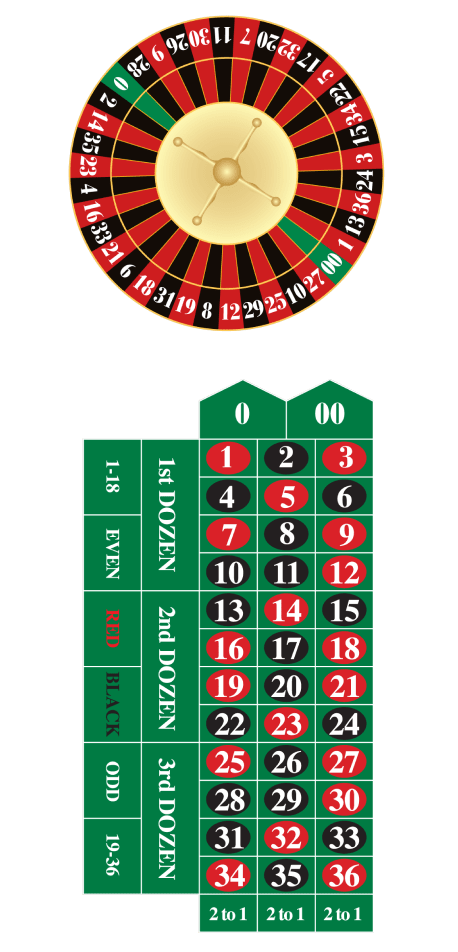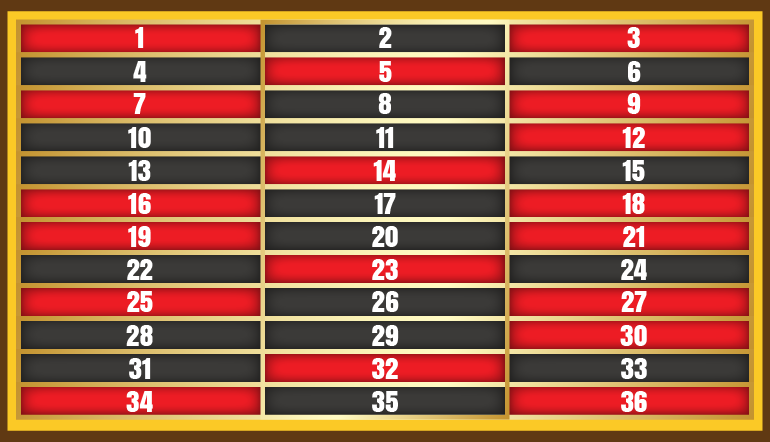Split Column Bet Meaning
- Split Column Bet Meaning Pertaining
- Split Column Bet Meaning Examples
- Split Column Bet Meaning Example
- Split Column Bet Meaning
- Split Column Bet Meaning Urban Dictionary
- Split Column Bet Meaning
- Understanding CHIRP's columns
An each-way bet sees the total bet being split in two, with half being placed on the win, and half on the place. Bettors receive a payout if the horse either wins, and/or is placed based on the place criteria as stated above. If you bet on Argentina -2.5 goals, then to win the bet they must win by three goals or more. It you bet on Iran +2.5 goals, that means to win the bet Iran can win, draw or lose by one or two goals. You can also bet the Asian handicap, a type of point spread that splits your wager on two different bets — like -1.5 and -2. If your team wins.

This document is intended to help users understand the meaning of each column in the channel editor. In most cases, the default value for a column can be used if you don't know what the meaning of the column is.

Users unfamiliar with programming radios are encouraged to enable Hide Unused Fields mode in the View menu. Also, enabling Smart Tone Modes in the same location can be rather helpful for reducing confusion.

Loc¶
This is the location or 'channel number' of the memory. The limits of what can be in this field are defined by your radio.
Frequency¶
This defines the receive frequency of the channel in Megahertz. If Duplex is set to None, then it is also the transmit frequency of the channel.
Name¶
This is the alphanumeric label for the memory, as displayed on the front panel. The length and valid characters are defined by what the radio is capable of supporting.
Tone Mode¶
This sets the mode used to transmit or receive squelch tones (or related selective calling technologies). The following explains what the options means:
- (None): No tone or code is transmitted, receive squelch is open or carrier-triggered.
- Tone: A single CTCSS tone is transmitted, receive squelch is open or carrier-triggered. The tone used is that which is set in the Tone column.
- TSQL: A single CTCSS tone is transmitted, receive squelch is tone-coded to the same tone. The tone used is that which is set in the ToneSql column.
- DTCS: A single DTCS/DCS code is transmitted, receive squelch is digitally tone-coded to the same code. The code used is that which is set in the DTCS Code column.
- Cross: A complex arrangement of squelch technologies is in use. See the definition of the Cross Mode column for details.
Tone¶

This sets the CTCSS tone to be transmitted if the Tone Mode is set to Tone. In Cross mode, it has additional meanings (see description of Cross Mode for more details).
ToneSql¶
This sets the CTCSS tone to be transmitted and used for receiver squelch if the Tone Mode is set to TSQL. In Cross mode it has additional meanings (see description of Cross Mode for more details).
DTCS Code¶
This sets the DTCS code to be transmitted and used for receiver squelch if the Tone Mode is set to DTCS. In Cross mode it has additional meanings (see description of Cross Mode for more details).
DTCS Rx Code¶
This sets the DTCS code to be used for receiver squelch (if the radio supports this capability) and Tone Mode is set to Cross (see description of Cross Mode for more details).

DTCS Pol¶
This sets the DTCS polarity of the transmitted code and the code used for the receive squelch any time DTCS is used for transmit or receive squelch. The first character pertains to the transmit polarity and the second pertains to receive polarity. The corresponding character is N for normal or R for reversed (aka 'inverted') polarity.
Split Column Bet Meaning Pertaining
Duplex¶
This sets the duplex mode of the channel. If set to (None) then the transmit and receive frequencies are the same. If set to either +* or *- (plus or minus) then the transmit frequency will be either above or below (respectively) the receive frequency by the value of the Offset field.
Split Column Bet Meaning Examples
If the duplex is set to split then the Offset field should contain the absolute transmit frequency to be used (if the radio supports this capability).
If the duplex is set to off then transmission on this channel will be disabled (if the radio supports this capability).
Note that for simplex channels, this should be set to (None) and repeater channels should have this set to either +,-, or split.
Offset¶
This sets the amount of difference between the transmit and receive frequencies used for the channel if Duplex is not (None) or off (in which case it is ignored). If the Duplex is set to a shift direction, then the Offset field should be set to the amount (in Megahertz) above or below the receive frequency to shift to find the transmit frequency. If Duplex is set to split then the Offset field should be set to an absolute transmit frequency.
Mode¶
This controls the transmit and receive mode of the channel. The following lists the common values and their meanings:
- FM: 'Wide' FM for two-way communications (i.e. 5 kHz deviation)
- NFM: 'Narrow' FM for two-way communications (i.e. 2.5 kHz deviation)
- WFM: 'Wide' FM for broadcast communications (i.e. ~100 kHz deviation)
- AM: 'Narrow' AM for two-way communications (i.e. aircraft band in the US)
- DV: Icom's digital D-STAR mode
Tune Step¶
The tuning step used to channelize the receive frequency.
Split Column Bet Meaning Example
Skip¶
The scan skip mode for the channel. The values and their meanings are:
- S: Skip this channel during scan
- P: This channel is a priority
Cross Mode¶
This field controls the squelch behavior of the channel when the Tone Mode is set to Cross. Each value consists of two technologies separated by an arrow (->). The value to the left of the arrow controls the selective-call method used on transmit, while the one to the right of the arrow controls the receive squelch. The possible values are:
- Tone: CTCSS tones are used. Transmit tone is taken from the Tone column, receive tone from the ToneSql column.
- DTCS: DTCS/DCS codes are used. Transmit code is taken from the DTCS Code column, receive code from the DTCS Rx Code column.
- <blank>: Indicates that no method is used for this, either transmit or receive.
The Cross Mode field allows addressing more commercial modes of squelch operation, such as using different tones or codes for transmit and receive. For example:
- Tone->Tone: This means use the Tone value for transmit tone, and the ToneSql value for receive squelch
- Tone->DTCS: This means use the Tone value for transmit tone, and the DTCS Rx Code value for receive squelch
- DTCS->Tone: This means use the DTCS Code value for transmit code, and the ToneSql value for receive squelch
- ->Tone: This means do not transmit a Tone or DTCS Code, but use the ToneSql value for receive squelch
- ->DTCS: This means do not transmit a Tone or DTCS Code, but use the DTCS Rx Code value for receive squelch
- DTCS->: This means use the DTCS Code value for transmit code, and receive squelch is open or carrier-triggered
- DTCS->DTCS: This means use the DTCS Code value for transmit code, and the DTCS Rx Code value for receive squelch
The most common betting systems that players use for roulette are geared towards Red and Black, but after that it is probably the Dozens and Columns.
To cover them quickly, there are three different Dozen bets on the roulette table marked as: 1st 12, 2nd 12 and 3rd 12.
There’s also 3 Column bets marked on the table as 2 to 1. The first Column covers numbers 1 to 34, the second covers numbers 2 to 35 and the third covers numbers 3 to 36.
So in total you have 6 bets, each of which covers 12 numbers (just less than a third of the wheel), they each have the same odds of hitting on any given spin and they all have the same payout which is 2:1. So if you bet £1, you will win £3 back.
Royal Panda are the best online casino for Dozen/Column betting. The have extremely flexible limits for each Dozen/Column and they pay out within 24 hours with no hassle when you win. Play at Royal Panda
The two main strategies that you can use for the Dozens and Columns are covered on our page on the Martingale Roulette Strategy but there’s so many sequences covered there for various parts of the wheel that it can be overwhelming, so we shall cover it again here on its own.
Strategy 1 – You pick a Dozen, any of them, and you bet on it with £1 (you can scale down to 10p if you like and divide the numbers below by 10). Then if you lose, you use the following betting sequence until you win:
1 – 1 – 2 – 3 – 4 – 6 – 9 – 14 – 21 – 31 – 47 – 70 – 105 – 158 – 237 – 355
As long as you win on any of those numbers, you will have a small profit. The obvious downside is that if you don’t get a win within that sequence, you have a big loss on your hands. Another downside is that because you’re covering less than a third of the table, you’re going to lose a lot more bets than you win over the long term of play. Here’s a table that shows how much you’ve lost in total at each stage of the progression.
| Martingale On Dozens/Columns, Starting With A Bet of 1 £/$/€ | |||
|---|---|---|---|
| Losses | Bet Placed (£/$/€) | Total Loss | Profit If The Bet Wins |
| 1 | 1 | 1 | 2 |
| 2 | 1 | 2 | 1 |
| 3 | 2 | 4 | 2 |
| 4 | 3 | 7 | 2 |
| 5 | 4 | 11 | 1 |
| 6 | 6 | 17 | 1 |
| 7 | 9 | 26 | 1 |
| 8 | 14 | 40 | 2 |
| 9 | 21 | 61 | 2 |
| 10 | 31 | 92 | 1 |
| 11 | 47 | 139 | 2 |
| 12 | 70 | 209 | 1 |
| 13 | 105 | 314 | 1 |
| 14 | 158 | 472 | 2 |
| 15 | 237 | 709 | 2 |
| 16 | 355 | 1064 | 1 |
Split Column Bet Meaning
As you can see, after 15 losses in a row your total loss will be £709 and your next bet will need to be £355 to cover the previous losses which is a total outlay of £1,064. Here are the odds of getting 15 spins in a row without your Dozen/Column hitting:
European Roulette: (25/37)^15 = 0.2793% – This works out at 1 in 358 chance.
American Roulette: (26/38)^15 = 0.3372% – This works out at 1 in 296 chance.
Just to give you an idea of what to expect, when playing roulette online,we have seen over 30 spins in a row without a Dozen or Column hitting and when this happens you will lose. If you test this out on any of our Free Roulette Games you will soon see a long losing run for yourself.
To get around this, people try and wait for 10 spins without a Dozen or Column hitting and then bet on it. Maybe even wait 20 spins before betting on it. This is known as fallacy though and doesn’t alter the odds of the game.
Strategy 2 – The problem with the above strategy is that you aren’t covering a large enough portion of the table so you get lots of losses. If you want to cover more of the table, you can bet on 2 Dozens at the same time instead. This is the progression that you would need to use:
1 – 3 – 9 – 27 – 81 – 243
Split Column Bet Meaning Urban Dictionary
As you can see, the numbers soon get very big and that’s because you need to times your bets by three after every loss (x3). The upside to this is that you’re covering just less than 2/3 of the table and you will get more wins than losses.
Split Column Bet Meaning
But with a steep progression like that, it only takes a few losses in a row to give you a big loss that is hard to recover from. As with the first system, some players try ideas such as waiting until the same Dozen has hit three times in a row and then bet on the other two, but this again is fallacy and doesn’t change the odds of the game.
No matter what strategy you use, you should set yourself a stop loss and target win and stick to it. For example, with the first strategy above, if you decide that you’re going to walk away if you lose the 47 bet, walk away rather than chasing losses.
Royal Panda are a fantastic online casino. They offer numerous roulette games with €0.10 – €200,000 table limits. Better yet, they pay out within 24 hours with no questions asked. Play at Royal Panda